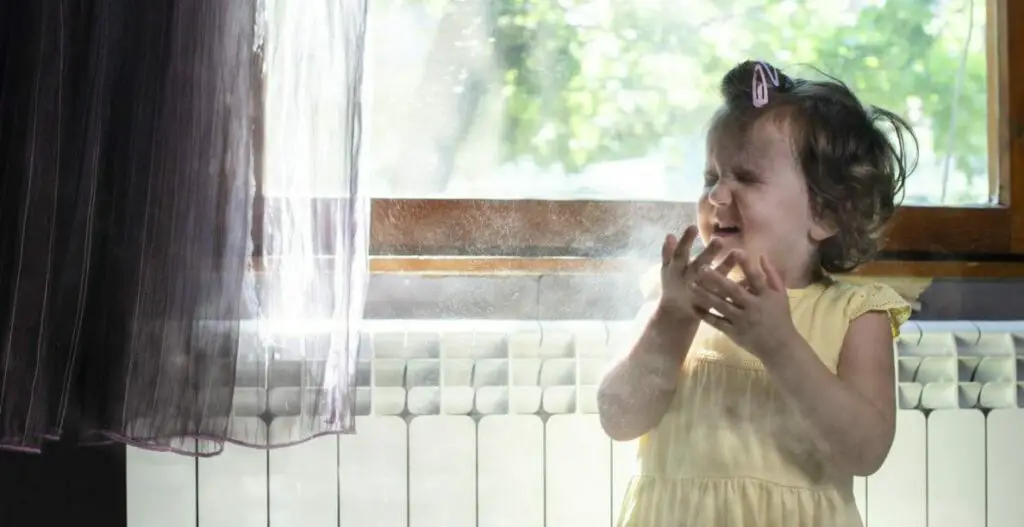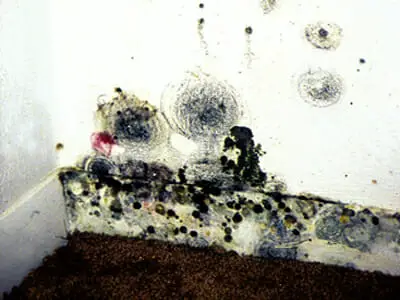To find mold in your home is such a disappointment, I should know I have been there and I have asthma. One day I found old paper files being eaten by mold in my basement and in the basement my asthma was terrible. We brought air purifiers, dehumidifiers and had some constuction work done. Everything is sorted out now and I have no problems with asthma in the basement. So let me take you through the process of choosing the best possible portable air purifier for mold.
As a general rule the essential feature of an air purifier for mold is that it prevents you breathing in mold particles and spores. Therefore it must have smart activation so that it has been on for at least 30 minutes before you enter the moldy area, by this time the mold airborne particle and spore count will have dropped. The best choice is the Coway 400s.
Mold can cause serious fungal infections of the lungs. However, this is not common and usually requires a damaged area of lung, often from previous infection, or a weakened immune system. If it does occur it can be very serious and difficult to treat. It is caused by breathing in mold spores and in the moist environment of the airways the mold germinates and starts growing. However, more commonly airborne mold particles can cause allergic reactions in people with a mold allergy, making conditions such as allergic rhinitis and asthma worse.
So in deciding on the best air purifier for mold the priority is to lower the mold exposure of you and your family.
The first thing to do is to reduce the number of mold spores and mold derived airborne particles as much as possible before you enter the part of the home with mold in it. For this to happen-
The Air Purifier Needs to be on at Least 30 Minutes Before You Step Into the Room-So it Needs to be “Smart”
To illustrate the time course of particle reduction by an air purifier, I performed an experiment*. Here are the results-
So you can see with the air purifier on its maximum setting and providing 9.4 air changes per hour the reduction in particle count only mildly surpassed the EPAs minimum target for adequate particle reduction. This shows that it is best to be careful in buying an air purifier and to check that it really will deliver a minimum of 5 air changes per hour for your room on its second to highest setting. In general you are unlikely to be able to tolerate an air purifier on its maximum setting for long as it is too noisy.
So the air will still be polluted for 30 minutes after the air purifier has come on. So if you do not have a smart air purifier that will come on 30 minutes before you step into the room you are either going to be breathing in more polluted air than you need or you will have to leave the room and come back 30 minutes later.
For some air purifiers you can convert a dumb air purifier into a smart one by buying a purifier with a timer or plugging it in to a programable smart plug. This is a good solution as it allows different schedules on different days of the week. You may want a very different schedule during the working week from that at the weekend. The most expensive air purifiers can be run in this way.
Unfortunately many air purifiers when the power to them comes on again they sit there doing nothing until you press the power button which means that you cannot control them with a smart plug. So you will have to go into the room 30-45 minutes before you want to be in it to switch on the air purifier. These are usually the cheaper air purifiers.
WIFI connected air purifiers can be controlled by smartphone Apps, Alexa or Google Home.
I only recommend either WI-FI controlled air purifiers or those that manufacturer’s have specified come on at the same airflow that they were last operating at and so can be operated with a smart plug.
So it is very important in choosiing the best air purifier for mold that it be smart.
Airflow Through the Air Purifier is Important
The more air is filtered every hour the lower the particle count. This is why the EPA sets the relationship between the clean air delivery rate (CADR) ot the air purifier and room size to a minimum of 4.9 air changes per hour (ACH). This means that the minimum standard is the the air purifier should process the volume of air in the room at least 4.9 times per hour. This will result in a particle reduction of 80%. This is a hard target to achieve and it is impossible to hit 100% reduction. In medical trials when people were given air purifiers they struggled to achieve a 50% reduction.
If you want to reduce particle count by 90% you may need 10 air changes per hour.
So airflow at a reasonable noise level is a critical factor in deciding on the best air purifier for mold. For me a comfortable sound level is anything below 50db. So I will give you the room size for each air purifier on the maximum airflow that will keep the sound level below 50db. I will also give you the room size for the maximum airflow but if this is above 50db I think you may struggle to live with the air purifier on this maximum setting.
You will need an air quality meter to check that the particle count hits these targets or that the AQI (air quality indicator) is as close to zero as possible but at least under 5.
Filter Ability to Stop Particles is Not a Concern
Mold spores are 2-40um in diameter and so easily caught by a true HEPA filter in an air purifier. They are a similar size to house dust mite allergen. More than 99.97% of spores will be removed by the a HEPA air purifier. HEPA filtration developed for the U.S. space program is a superb air filtration system and even 50 years later is the world’s standard system.
So provided you buy a HEPA air purifier and make sure the filter is true HEPA and avoid those with terms such as “HEPA like”, “99% HEPA”…… you should be fine.
As a general rule mold does not damage the air purifier, although of course a replacement filter will be needed occasionally. Then the accumulated mold particles and spores on the old filter will be discarded with it.
Chemical Removal is a Lower Priority Than in Some Other Situations
Mold can produce toxic compounds but these are not usually as much problem as an airborne pollutant as for instance the air pollutants from wildfires. So what is needed from an activated carbon filter is rather less. So the air cleaners that we choose for fungi do not need to have such a large activated charcoal filter. Mold does cause household odors and so having a carbon filter will improve your indoor air quality by getting rid of the household odor.
UV Light is Not Helpful
Mold spores are very resistant to UV light and so not easily killed by it. The problem with UVC light in air purifiers is the the spores are whisked by the UV bulb so fast that there is not time for it to inactivate them.
Stopping Mold Spores Spreading in High Concentration Into Other areas of Home
An air cleaner will also stop the high concentration of spores and fungal particles spreading throughout your home and causing other rooms to be difficult to live in and possibly even encouraging mold growth else where in your home an air purifier is a good first line of defence. It is a simple quick and effective, but you will also need to take other steps as outlined below.
The Air Purifier Must Not be Too Noisy
If you buy an air purifier for the air flow on its maximum setting but then find it is too noisy on that setting, you will naturally switch it down. If the clean air delivery rate/air flow was enough for your room on its maximum setting when you switch it down the lower CADR/air flow will probably no longer purify your air adequately with potential health consequences.
Please see this article on using an air purifier
Best Air Purifier-if $500 not too much
The choices here represent the best choices of air purifiers from all established manufactures on the market who would give me the noise levels at their machine’s various air flows. This information is needed so that I do not recommend an air purifier that is too noisy for you. Also, only air purifiers with smart control were considered. as explained above for health reasons an air purifier needs to come on 30 minutes at least before you step into the room as explained here. So a schedule for it switching on and off needs to be programmable.
Coway Airmega 400S (Large rooms and quiet. Average/above average chemical filtration and excellent particle filtration and )
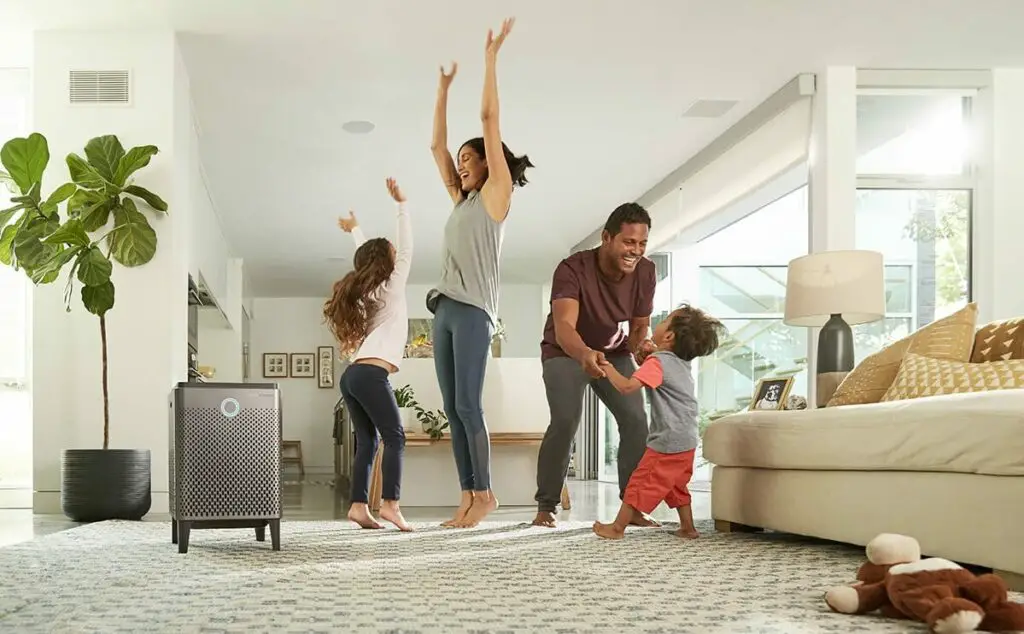
Specifications
| Filters | |
| HEPA filter | HEPA specified to remove 99.8% of ultrafine particles down to a size of 0.01um |
| Carbon filter amount of carbon (lb) | 1.5 lb so more than most other air purifiers |
| Filter Change HEPA (Particles) | 12 months |
| Filter Change Carbon (Chemicals) | 12 months |
| Airflow | |
| CADR at =<50db (CADR on Maximum) | 293 cfm |
| Maximum Room Size (Noise less than 50db*) | 450 sq ft |
| Maximum Room Size (On noisiest setting) | 640 sq ft |
| Smart Control | Yes phone app/Alexa:/Google Home |
| Power | 66 W |
| Weight | 24.7 lbs |
| Dimensions “H x “W x D” | 22.8 x 14.8 x 14.8 |
| Annual Running Cost Electricity ($) | $40 |
| Annual Running Cost Filters ($) | $120 |
| Total Annual Running Cost ($) | $160 |
All the above are approximate and assume running the air purifier for 12 hours per day on the highest setting that keeps the noise below the level specified in db in the table. This is less than or equal to 50db in normal daytime use and 35db for bedrooms.
*Most people will not wish to have the air purifier on a setting louder than about 35db for sleeping in a bedroom-you may wish to have a quieter setting than 35db this is just a ballpark estimate for most people. On the other hand, if your room layout allows you to be much further than 6 feet from the air purifier you may find the noise this machine makes at top speed is alright. The calculations for room size assume that you have 8 foot ceilings and 5 air changes per hour.
Never run an air purifier on auto mode using the inbuilt sensor. These cannot detect ultrafine particles which are damaging to human health, please see this article- How to test the air quality in your home.
Also Good-
Under $300 Coway AP-1512 HHS (cheaper but lower air flow and noisier than the Coway 400s)
Careful! this is the newer version of the Coway AP-1512 so look for the “S” on the end of the code number. It is not only smart but more importantly uses different upgraded filters.

| Filters | |
| HEPA filter | HEPA specified to remove 99.8% of ultrafine particles down to a size of 0.010um |
| Carbon filter amount of carbon (lb) | 0.75 lb |
| Filter Change HEPA (Particles) | 12 months |
| Filter Change Carbon (Chemicals) | 12 months |
| Airflow | |
| CADR at =<50db (CADR on Maximum) | 139 cfm |
| Maximum Room Size (Noise less than 50db*) | 214 sq ft |
| Maximum Room Size (On noisiest setting) | 370 sq ft |
| Smart Control | Yes WIFI |
| Power | 80 W |
| Weight | 12 lbs |
| Dimensions “H x “W x D” | 17 x 18 x 10 |
| Annual Running Cost Electricity ($) | $50 |
| Annual Running Cost Filters ($) | $70 |
| Total Annual Running Cost ($) | $120 |
Under $200
Winix AM90
This is the replacement for the Winix 5500 remodelled and has the advantage of smart WIFI control.
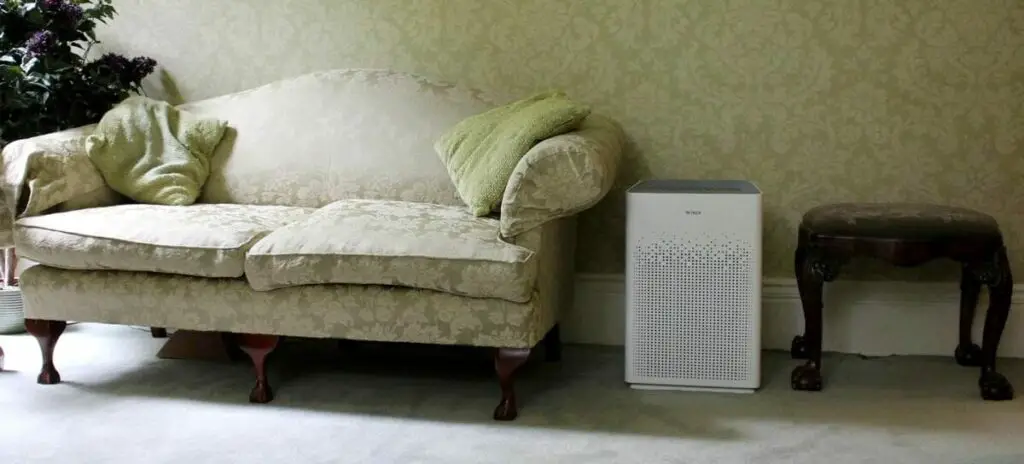
| Filters | |
| HEPA filter | HEPA 13 filter |
| Carbon filter amount of carbon | Small amount of carbon incorporated into main filter 0.1 lb |
| Filter Change HEPA (Particles) | 12 months |
| Filter Change Carbon (Chemicals) | 3 months |
| Airflow | |
| CADR at =<50db (CADR on Maximum) | 126 cfm (234 cfm) |
| Maximum Room Size (Noise less than 50db*) | 194 sq ft |
| Maximum Room Size (On noisiest setting) | 360 sq ft |
| Smart Control | Smart Phone App |
| Power | 65 W |
| Weight | 15.8 lb |
| Dimensions “H x “W x D” | 23.5 x 8.7 x 15.1 inches |
| Annual Running Cost Electricity | $40 |
| Annual Running Cost Filters | $80 |
| Total Annual Running Cost | $120 |
Under $100
Levoit 200S
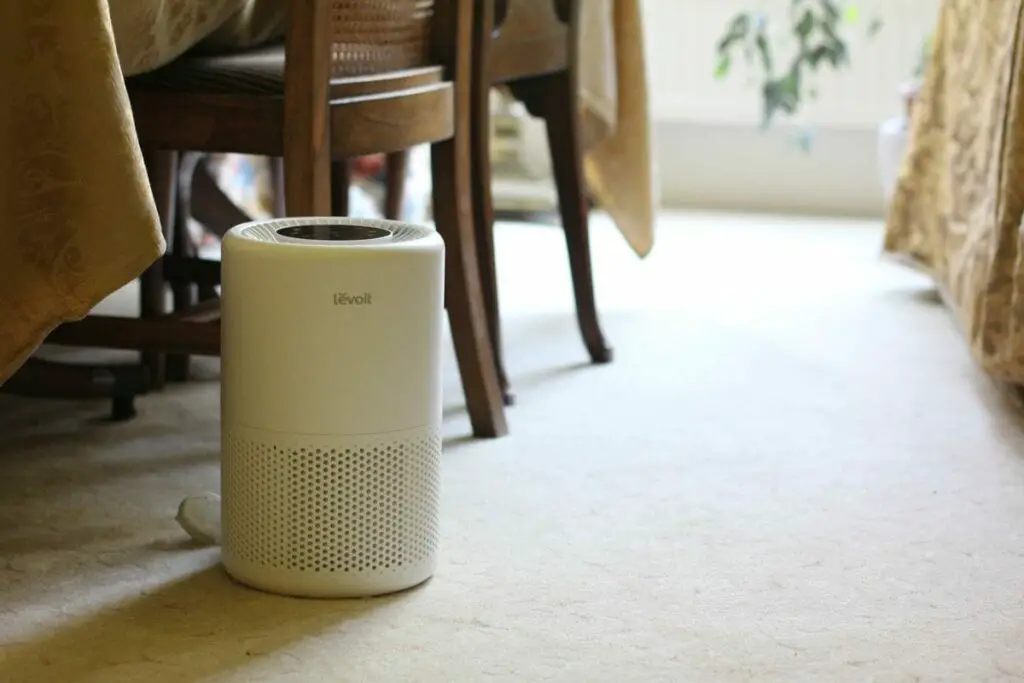
| Filters | |
| HEPA filter | HEPA 13 filter |
| Carbon filter amount of carbon | Small amount of carbon incorporated into main filter 0.1 lb |
| Filter Change HEPA (Particles) | 7 months |
| Filter Change Carbon (Chemicals) | 7 months |
| Airflow | |
| CADR at =<50db (CADR on Maximum) | 118 cfm (118 cfm) |
| Maximum Room Size (Noise less than 50db*) | 183 sq ft |
| Maximum Room Size (On noisiest setting) | 183 sq ft |
| Smart Control | Smart Phone App/Alexa/Google Home |
| Power | 37 W |
| Weight | 6.6 lb |
| Dimensions “H x “W x D” | 12.6 x 8.1 x 8.1inches |
| Annual Running Cost Electricity | $24 |
| Annual Running Cost Filters | $45 |
| Total Annual Running Cost | $70 |
Before Buying-Do You Also Need Your Air Purifier for Smoke?-if so consider buying one of these 2 air purifiers
Before you buy an air purifier for mold consider if you need one for smoke as well as if you do you may be better buying a different air purfier. The challenges of smoke are very different from mold. Mold particles and spores are relatively large and any air purifier can easily remove them provided it has a HEPA filter and a high enough air flow. However the challenge with smoke is especially ultrafine particles and cancer causing chemicals, to remove these most efficiently there are 2 air purifiers produced by iQair which are ideally suited to the task. They have the largest carbon filters of any air purfiers for which the clean air delivery rate CADR is specified, please see this post. It is important that the clean air delivery rate is specified because otherwise it is impossible to follow EPA guidance in ensuring minimum standards of filtration capacity for your room.
4 Crucial Things That Need to be Done Next if You Have a Mold Problem
Isolate the Area if Possible Until the Mold is Dealt With
This is to stop a high concentration of mold spores and allergens spreading throughout your house. This may help prevent allergic reactions and make it less likely that mold will grow elsewhere.
Stop the Mold Growing
Even with good air purification there will still be 5-20% of the mold products in the air and so there is a need to stop the mold growing and also to remove it.
The best way to stop mold growing is to deprive it of water. You can do this by reducing the relative humidity below 80%. The quickest way to do this is to use a dehumidifier. So you may wish to buy one to keep the humidity in the area with mold at 30-50%, this should stop the growth of mold.
Remove the Defect That Allowed it to Grow In The First Place
The source of the moisture also needs addressing. If it is a leaky roof or breach of basement, water proofing the source of the leak needs fixing. It may be that the area you are in has high levels of humidity at some times of the year and then a whole house dehumidifier may be the best option.
Mold prevention is also important, as a general rule to prevent mold growth any water damage to your home should be dried out within 24-48 hours. This is likely to prevent mold from starting to grow.
Remove the Mold
Once you have removed the conditions for mold to grow, you should consider how to remove any mold. The EPA recommends that if the patch of mold is 3 feet by 3 feet or less then you could do it yourself but if it is larger, it is best to get a professional contractor in to do it. I would add that if you have any respiratory condition or problem with your immune system that you should not do it yourself.
If you do remove the mold yourself, you should have a mask to prevent you breathing high levels of fungal fragments and spores into your lungs. I have written an article about the best type of mask to get here.
There is a very useful EPA guide as to what to do if you find household mold here.
Conclusion-the best air purifier for mold
In selecting the best air purifier for mold it is important that it helps you avoid airborne mold spores and particles and that it cleans the air before you step into the room with mold. So you need a smart air purifier, or a dumb one plugged into a smart plug. Then you can set the air purifier to come on 45 minutes before you step into the room. So when you enter the room the mold spore count witll have been reduced at least 80%.
It is of course also important that air purification is very effective, the filter provided it is a HEPA filter is not an issue. What is an issue is the air flow, the higher the airflow the lower the spore count in the air. So the air purifier must be capable of a high airflow at a noise level low enough for you to be comfortable with it.
The Coway 400s is the top pick for this but all the other machines will do a great job and the Levoit is under $100.
*Details of experiment-I used an iQair HealthPro Plus air purifier on its maximum setting providing 9.4 air changes per hour, in a room with the door and windows closed. The readings were on normal room air and I used a Trotec PC200 particle counter to count 0.5um diameter particles. This size is the smallest particle size that laser diffraction technology can accurately measure.
Related Questions
Related Posts
Do Air Purifiers Help With Mold
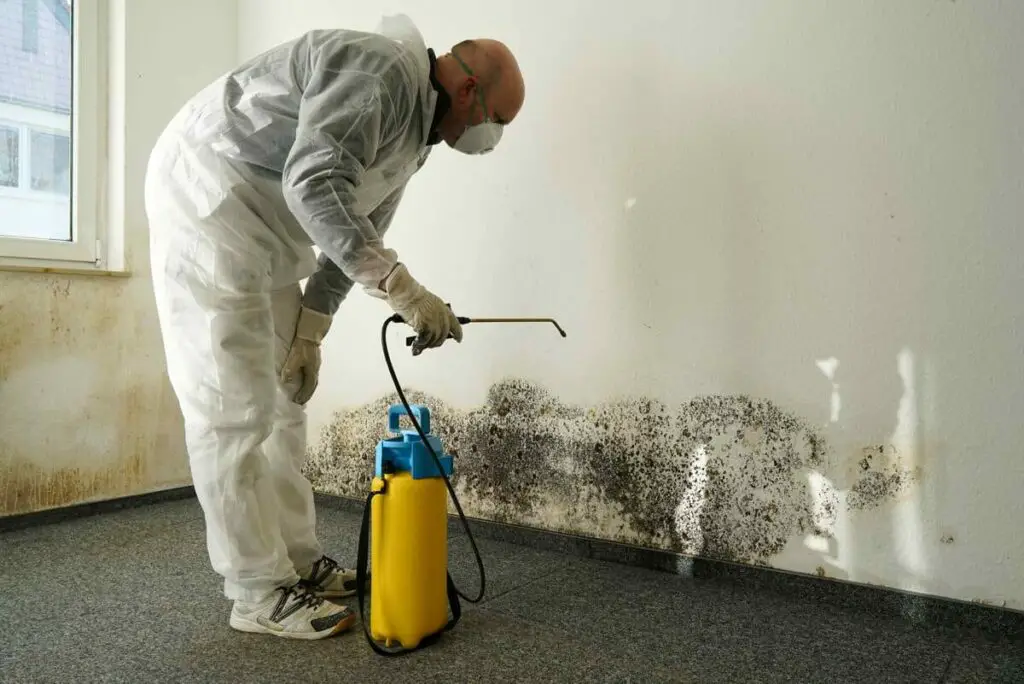
How can I reduce air pollution in my home?
